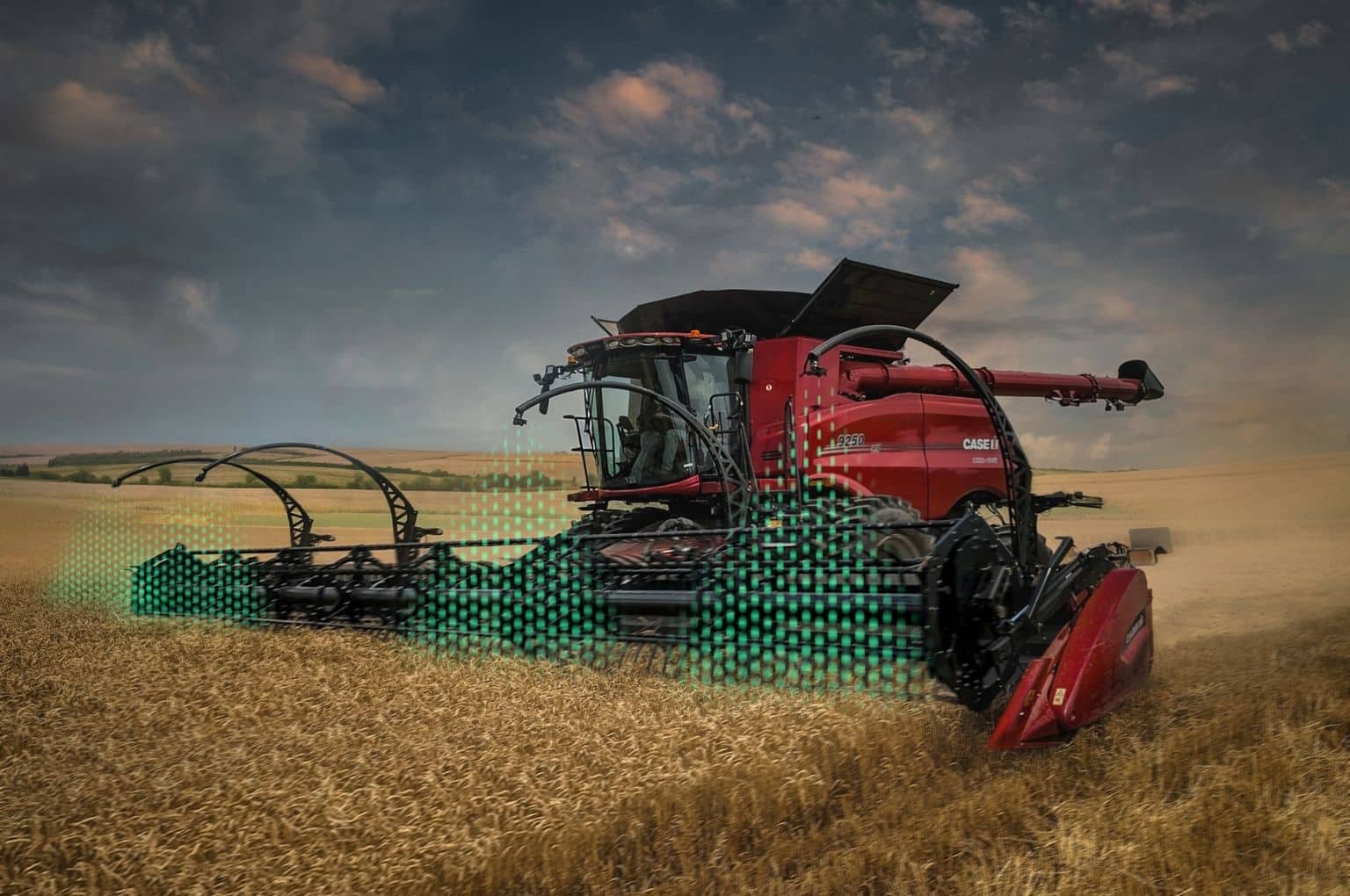Case IH Advanced Feed-rate predicts crop density
The Advanced Feed-rate Control system developed for Case IH AxialFlow combines has been awarded a Silver Medal in the Innovation Awards, presented by the organisers of the Agritechnica exhibition. It predicts crop density before the material enters the machine. In contrast to solutions that alter machine parameters once the crop has entered the combine, Case IH Advanced Feed-rate Control uses forward-looking radar sensors to scan and assess density of the crop before it enters the machine, rather than during the threshing process.
The four header-mounted radar units measure the complete plant mass from the ground up for a highly accurate crop density assessment, The information generated is used to automatically adjust key settings, such as forward speed for the crop volume the machine is about to ingest. As a result, combine forward speed and engine load are maintained as closely as possible to the desired level, maximising output without the risk of blockage. In addition, experienced operators can get the maximum from their machine, while those less experienced can be more confident they can push the combine without fear of it blocking.
Boost work rates
Because operators can work at faster ground speeds than might otherwise be possible, the development of proactive Advanced Feed-rate Control has the potential to boost work rates by up to 20% when compared with a combine fitted with the established reactive automated feed-rate intake. Greater consistency of throughput speeds minimises losses and improves grain quality, while reduced blockage risk improves safety and minimises inconvenience and downtime. The system is fitted the VariCut header paired with the Axial-Flow 7160 combine. In addition to Advanced Feed-rate Control, the new models incorporate full AFS Harvest Command connectivity.
“The Agritechnica awards panel’s recognition of the benefits offered by this development is really gratifying,” says Peter Friis, Head of Combine Business for Case IH in Europe. “The proactive Advanced Feed-rate Control provides the ability to get the most from the combine’s potential regardless of operator experience, enabling users to maximise output in short weather windows without risk of overloading.” (Source: worldagritech.com)
Faresin goes fully electric with a new mixer wagon
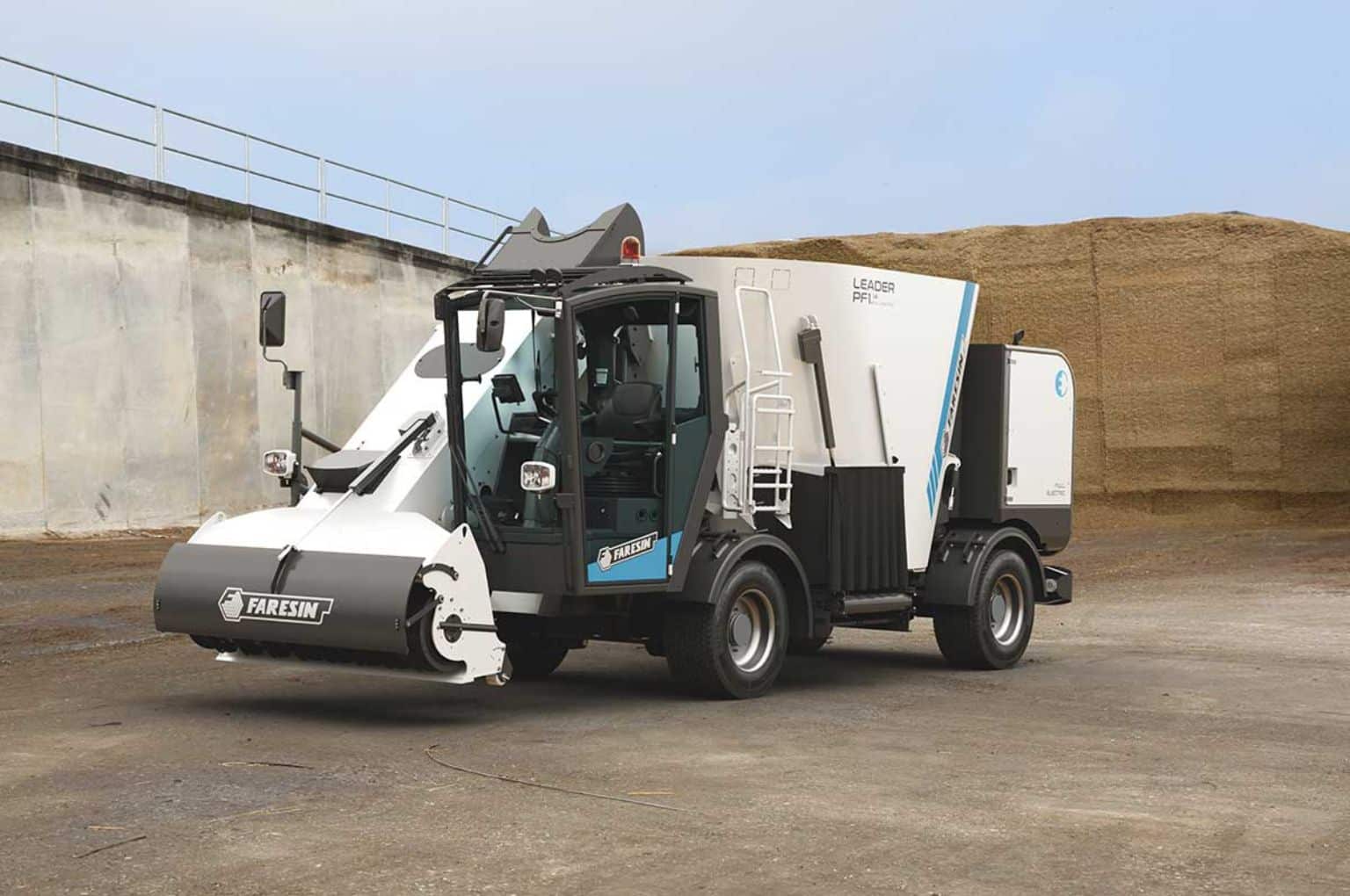
The Leader PF Full Electric self-propelled mixer wagon was introduced to the world at the beginning of November. It completes Faresin’s electrified range, launched in 2018 with its electric telehandler. The new Leader PF Full Electric has been designed to make use of the electricity that farms produce through photovoltaic or cogeneration plants at low cost. At the same time, the machine produces no pollutant emissions, thus reducing the environmental impact of the farm. The use of electrical technology also promotes animal welfare and enables certification of the production chain.
“Thanks to the virtuous transversatility that distinguishes our research and development process, we were able to implement our Full Electric technology, completely Made in Faresin, in the Mixer Wagons line as well,” says President Sante Faresin. The result is a machine that offers a work experience that is fully equivalent to what one would have with an endothermic engine, but without emitting greenhouse gases.”
Similar performance
The Leader PF 1.14 Full Electric has 14 cubic meters of mixing tub capacity and a vertical auger. Faresin engineers have worked hard to ensure performance quite similar to their respective heat-powered models, while maintaining enough range to complete at least a full day on an averagesized farm. For this reason, the 91 kW, 210 Ah Lithium Iron-Phosphate battery integrated with Farmatics telematics for remote control was installed in the rear engine compartment. Its location at the rear allows for optimal weight distribution, greater operational convenience such as reduced dirt in the compartment and easy access to components, and other advantages while driving, such as comfort and visibility.
Battery charging is done with complete flexibility thanks to the Universal Charge system, a single plug-in interface for 220 V single-phase and 400 V three-phase supplies. The machine also has a system that recovers energy during braking and accelerator release by storing it in the battery and increasing its range. The entire system is monitored by diagnostics involving all electrical, electronic, and hydraulic parts, including the in-cab control instrumentation. Tractive force comes from a 51-kW electric motor located in the rear axle, which also transmits motion to the front axle. The system has two gears that allow travel up to a maximum speed of 20 km/h. The Leader PF Full Electric has four-wheel drive and steering that allows three types of steering (concentric, crab-steering, and front-only). It is also equipped with a hydro-pneumatic suspension that can be adjusted in height from the cab, allowing a comfortable and safe ride.
Faresin has introduced its first fully electrical self-propelled mixer to the market.
Homogeneous mixtures
The geometry of the mixing tub, combined with the special profile of the auger, quickly prepares homogeneous mixtures. There are eight mixing speeds, which allow the machine’s performance to be adapted to the recipe. In addition, a special “Cleaning” function allows the auger to completely discharge the content of the mixing tub, preventing excessive stagnation of product dangerous to animal health. To meet the needs of each farmer, the unloading system can be configured with various types of mats with displacement or lifting operated directly through the cabin display. Accuracy is important to achieve good results and keep feed costs under control. Through the electronic weighing and dosing system located in the booth, or by using the Farm Manager Web business management programme, it is possible to programme the recipe and constantly monitor the loaded ingredients. The main functions are operated by the electro-proportional joystick and side keypads, while the automotive-inspired push-button panel allows precise and timely control of all loading and unloading parts. (Source: World-Agritech.com)
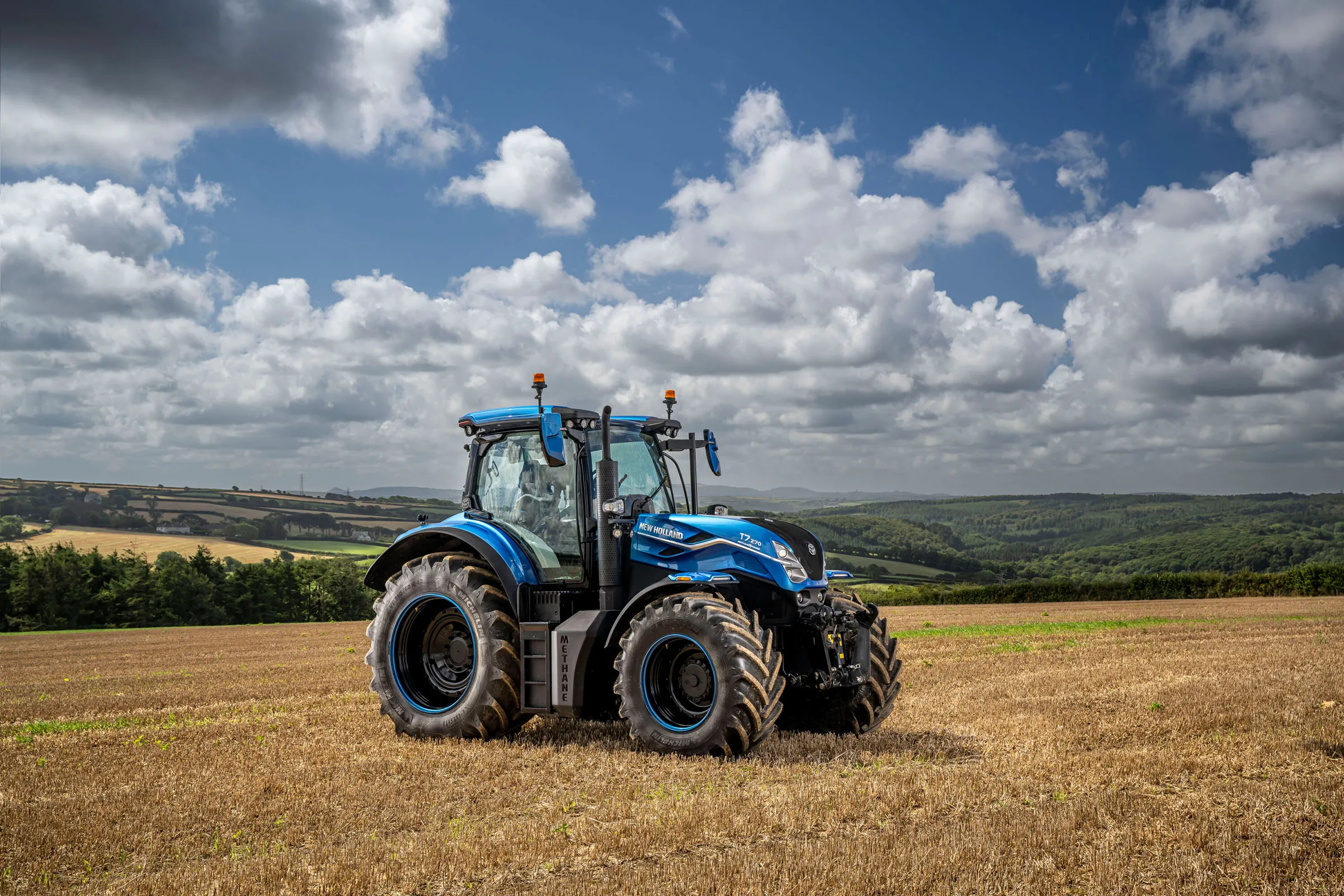
The New Holland T7 Methane Power LNG tractor made it onto TIME’s list of innovations that can change the world.
New Holland’s T7 Methane Power LNG tractor on TIME’s Best Invention List 2023
The New Holland T7 Methane Power LNG tractor made it onto TIME’s list of innovations that can change the world.
Among a wide range of innovations across several categories, TIME Magazine has chosen New Holland’s T7 Methane Power LNG tractor to be featured in their Best Invention List 2023 TIME has been expanding their categories in response to the rapidly-changing progress in fields such as artificial intelligence, sustainability and more, paying special attention to growing fields such as the electric vehicle industry, green energy, and the metaverse. This year’s special mentions list featured 50 inventions recognised for their unique impact. New Holland’s T7 Methane Power LNG (Liquefied Natural Gas) tractor is an industry first and the latest development in the brand’s Methane Power tractor offering. With its LNG power solution, this tractor more than doubles the autonomy capability of the current methane powered range: using liquefied methane delivers four times as much fuel storage capacity when compared to compressed gas (CNG).
The LNG tractor can be fuelled by fugitive methane, strategically captured from livestock waste slurry lagoons. The methane is converted into fuelgrade liquefied natural gas (LNG) using patented cryogenic processes solving the low boiling point challenge historically seen with this fuel source. So far, the LNG tractor has worked across multiple continents with prototypes being developed and tested to continue to deliver the best experience for farmers around the world. “This Mention reflects the long commitment New Holland has in sustainability and our role of leadership in the agricultural sector. This award is a milestone for the company, so congratulations to everyone who worked so hard to achieve such incredible results,” said New Holland Brand President Carlo Lambro. (Source: African Farming)

The New Holland T7 Methane Power LNG tractor made it onto TIME’s list of innovations that can change the world.
SolAgra collaborates with UDel for Agrivoltaics research
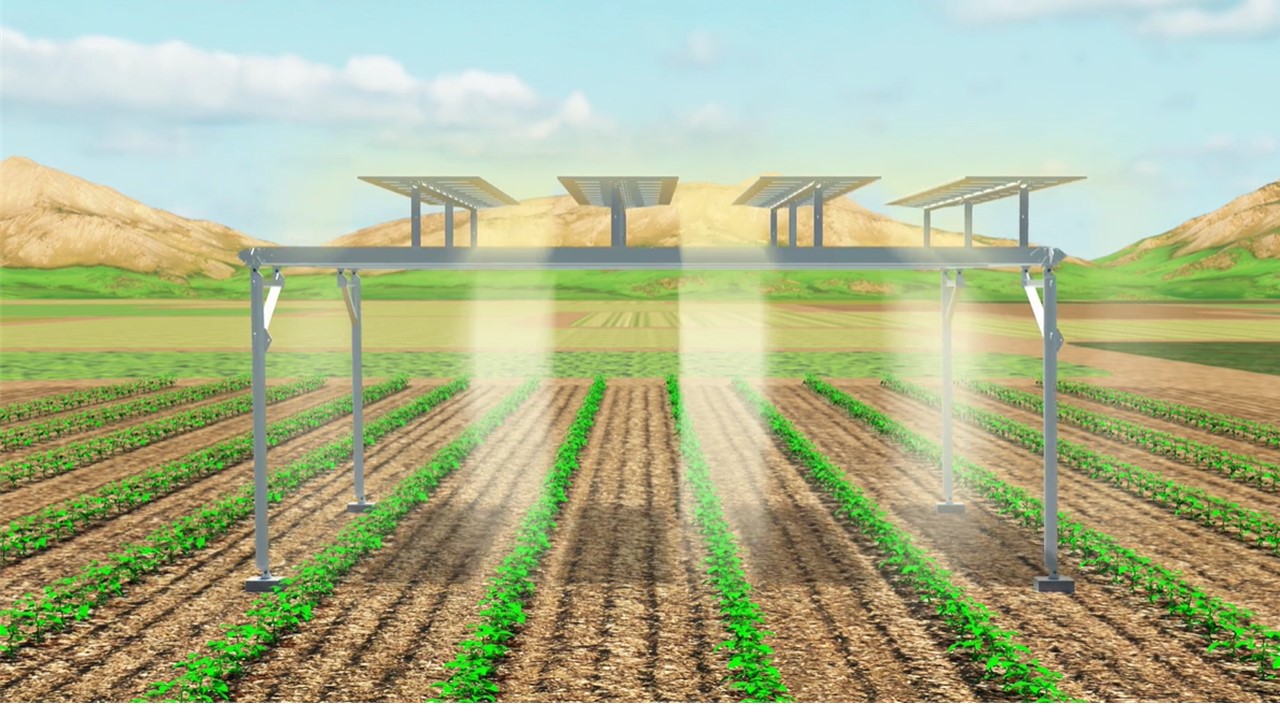
The hinged structure itself can also be shifted to control light penetration. An advantage of having plants and even irrigation underneath the solar system is that the panels do not overheat and are therefore more productive.
SolAgra has recently contracted with the University of Delaware (UDel) for two agrivoltaic solar plants that will be built at UDel’s Newark and Georgetown campuses. These solar arrays are planned to be built and launched for the 2024 growing season, with facilities giving access to students and faculty of the College of Agriculture and Natural Resources and offering them an opportunity to study the benefits of co-locating solar tracking systems with crop production. The test crops will mostly comprise of high-value fruits and vegetables like tomatoes, peppers, lettuce, and strawberries that are currently bearing the brunt of climate change. Students in the College of Engineering and Institute of Energy Conversion will gather data on solar electricity generation. Any mutual benefits demonstrated will highlight the potential of using agricultural land for large-scale dual-use PV installations. SolAgra, which calls its patented technology SolAgra Farming, uses patented elevated solar arrays to produce green energy on farmland while simultaneously sustaining or improving the quality of crops being grown beneath the solar arrays. This unique agrivoltaics technology provides DynamicShiftingTM and CounterTrackingTM of elevated solar arrays to support the dual use of farmland.
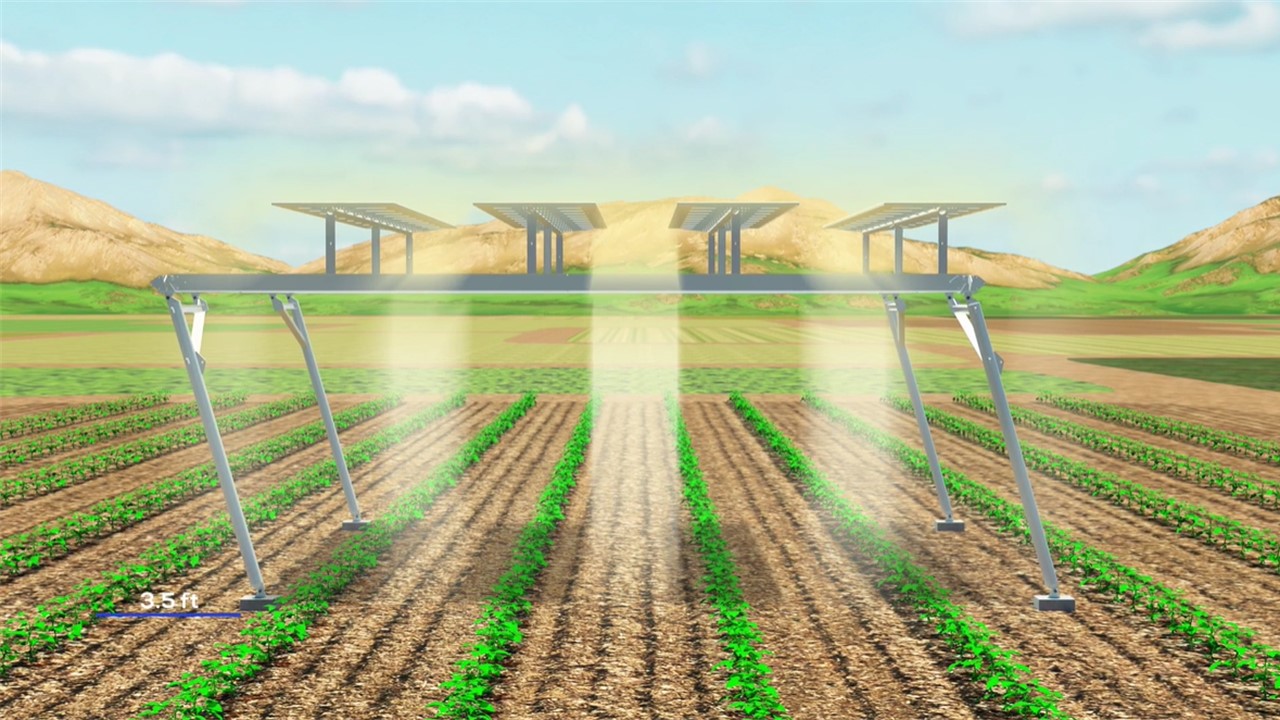
SolAgra’s solar panels are placed on a high structure to allow tractor and implement movement in fields. The panels can be tilted to follow the sun or manually positioned to protect plants against hail or too much heat.
This means that the panels can be tilted to allow more of less sunlight through to the plants. Moreover, the company’s Solar Platform with its hinged design also controls the mobility of the structure to help regulate the location of sunlight and shade landing on the field. This allows farmers to control the amount of shade the crops receive while maintaining solar power production. In addition to enjoying the shielding from excess sunlight, rain and hail, the challenges for the future are providing clean energy and food in a changing climate. It makes sense to find a common solution.”
For more information, visit: https://www.solagra.com.

